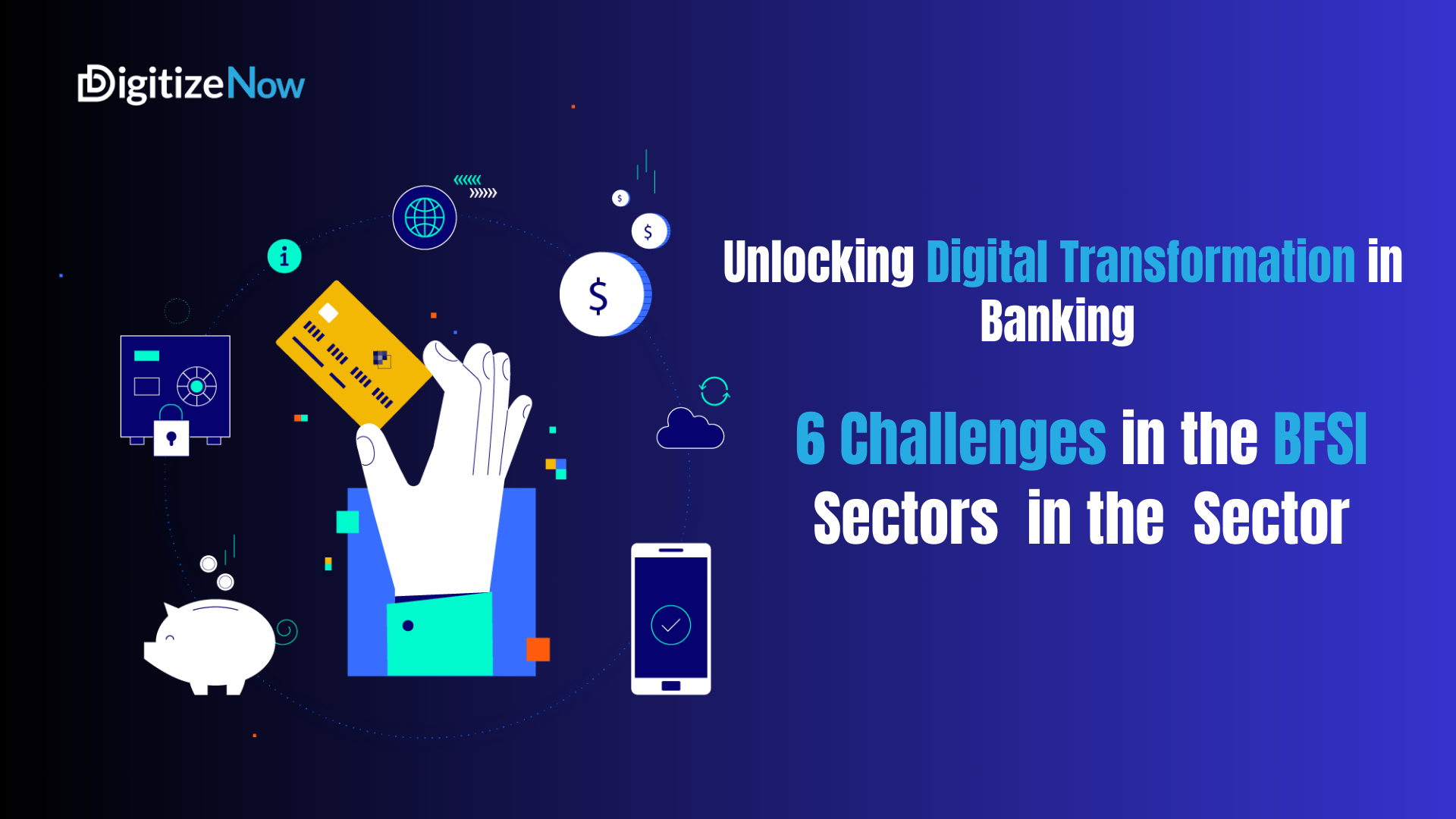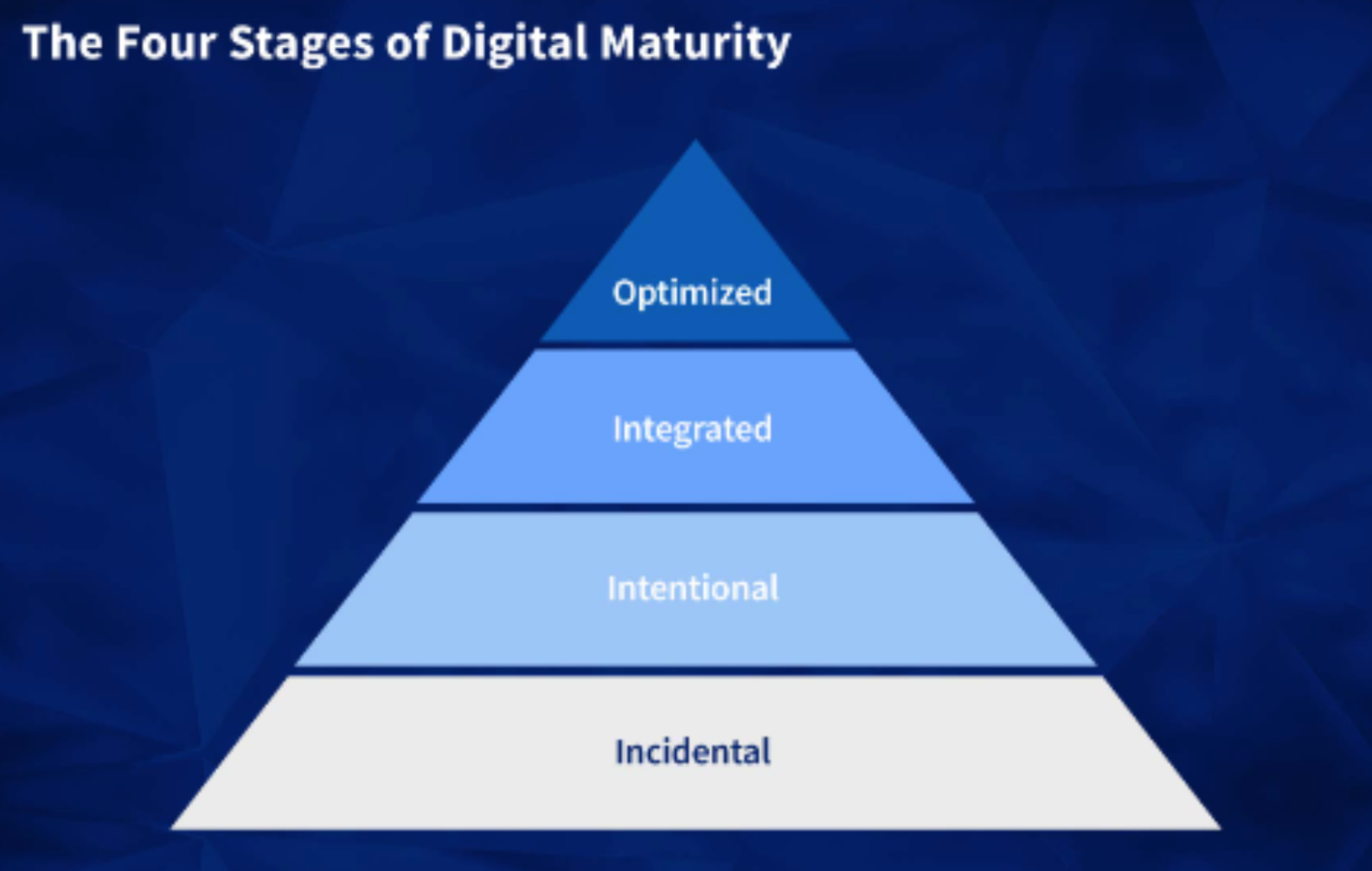With added contribution from – Manosh Markos
In today’s fast-paced world, the buzzword digital transformation in banking is often heard, but what exactly does this mean? Simply put, it refers to the profound shift toward utilizing digital technologies to revolutionize traditional banking practices.
Digital banking, an integral part of this transformation, includes a wide array of services offered through digital channels, from online banking platforms to mobile apps.
Now, why is this digitalization in banking sector is essential? Its ability to enhance customer experiences, streamline operations, and stay competitive in a rapidly evolving landscape is necessary. As customer expectations evolve and technology advances, banks must adapt or risk falling behind.
However, amidst the promise of digital transformation lie several challenges unique to the Banking, Financial Services, and Insurance (BFSI) sectors. In this blog, we’ll delve into six hurdles, shedding light on how they impact the journey toward digitalization and strategies to overcome them.
Let’s embark on this exploration together as we uncover the keys to unlocking digital transformation in banking.
Challenges in the BFSI Sectors
As financial institutions strive to keep pace with evolving consumer demands and technological advancements, they encounter challenges unique to the Banking, Financial Services, and Insurance (BFSI) sectors. Let’s delve deeper into these hurdles, understanding the critical need for digital transformation in banking and the obstacles ahead.
The Need for Digital Transformation in Banking
In a world where everyone’s glued to their screens and wants everything right away, the conventional way banks operate will only do a little in today. Customers expect seamless digital experiences, prompting banks to undergo a digital transformation. Digital transformation aims to improve customer satisfaction, optimize operations, and stay competitive.
Identifying the Challenges Ahead
Banks face numerous challenges in their digital transformation journey, including outdated legacy systems and regulatory compliance complexities. By identifying and addressing these digital transformation challenges, banks can navigate the road to digitalization more effectively.
1. Legacy Systems and Infrastructure
One of the foremost challenges hindering digital transformation in banking is the presence of legacy systems and infrastructure. These outdated technologies often lack compatibility with modern digital solutions, making integration cumbersome and costly. Overcoming this hurdle requires strategic modernization efforts to ensure seamless transitions through digital adoption platforms.
2. Regulatory Compliance and Security Concerns
Navigating the complex landscape of regulatory compliance and security concerns poses significant challenges for banks undergoing digital transformation. Stricter regulations, such as GDPR (General Data Protection Regulation) and PSD2 (Revised Payment Services Directive), impose stringent data protection protocols and security measures. Balancing compliance requirements with innovation is essential to mitigate risks and build customer trust.
3. Customer Resistance and Adoption Hurdles
While digital banking offers numerous benefits, convincing customers to embrace these changes can be challenging. Many individuals remain apprehensive about the security of digital adoption platforms or prefer traditional banking methods. Addressing customer resistance requires proactive communication, user-friendly interfaces, and personalized experiences to foster digital transformation in banking.

4. Talent and Skill Gap
A talent and skill gap exists within banks as they transition to digital-first operations. Recruiting and retaining professionals with expertise in digital technologies, data analytics, and cybersecurity is essential for driving successful digital transformation in banking initiatives. Investing in employee training and fostering a culture of continuous learning can help bridge this gap effectively.
5. Integration of Digital Banking Solution
Integrating disparate digital banking solutions presents another significant challenge for financial institutions. Seamless integration is essential to providing a cohesive and personalized customer experience, from core banking systems to mobile applications. Leveraging digital adoption platforms and APIs can streamline integration processes and accelerate time-to-market for new solutions.
6. Data Management and Privacy Issues
Banks must prioritize effective data management and privacy practices in an increasingly data-driven environment. They must safeguard sensitive customer information from cyber threats and ensure compliance with data protection regulations. Implementing robust data governance frameworks and leveraging encryption technologies can mitigate risks and enhance customer trust.
Addressing these challenges reveals that the journey toward digital transformation in banking is multifaceted and complex. Banks can achieve growth and success in the digital age by addressing obstacles with strategic planning, innovative solutions, and a customer-centric approach.
Role of Digital Adoption Platform
Embarking on the journey of digital transformation in banking, one crucial aspect that can significantly aid in overcoming challenges is the implementation of Digital Adoption Platforms (DAPs).
Digital Adoption Platforms act as navigational tools, guiding users and employees through the complexities of digital banking interfaces and functionalities. They provide interactive tutorials, step-by-step guides, and contextual assistance to enhance user experience and streamline the adoption of digital platforms.
Benefits of Implementing Digital Adoption Platforms
Implementing digital adoption platforms brings forth many benefits for banks seeking to embrace digital transformation. These platforms improve user engagement, reduce support costs, accelerate user onboarding, and drive overall efficiency by ensuring smooth transitions to digital channels.
Choosing the Right Digital Adoption Platform for Banks
Selecting the appropriate digital adoption platform is paramount for banks aiming to maximize the benefits of digitalization. Factors to consider include the platform’s ease of integration with existing systems, customization capabilities, scalability, and compatibility with the bank’s digital strategy.
Consider WalkMe your perfect partner in the digital adoption platform for the BFSI sector. WalkMe offers a comprehensive suite of digital adoption solutions tailored to the banking industry’s unique needs. With its intuitive interface, customizable features, and robust support infrastructure, WalkMe enables banks to maximize the potential of their digital initiatives. By partnering with WalkMe, banks can confidently navigate the challenges of digital transformation and unlock new opportunities for growth and innovation.
Incorporating Digital Adoption Platforms into the digital transformation journey empowers banks to effectively navigate challenges, enhance user experiences, and drive innovation in the BFSI sector.

Final Thoughts on Overcoming Challenges in the BFSI Sector
As technological advancements continue to reshape the industry landscape, banks must embrace digital transformation to stay relevant and competitive.
By leveraging digital adoption platforms and innovative solutions, banks can revolutionize their operations, enhance customer experiences, and unlock new avenues for growth.
While the road to digital transformation in banking may be fraught with challenges, it also presents numerous opportunities for banks to thrive in the digital age. Banks can overcome hurdles and emerge more vital than ever by addressing legacy systems, regulatory compliance, and customer resistance with strategic planning and innovative solutions.
As we navigate through these challenges, it’s crucial to keep sight of the ultimate goal: to create a more efficient, accessible, and customer-centric digital banking experience through digital transformation in banking.
With perseverance, determination, and the right tools, the BFSI sector can successfully unlock the full potential of digital transformation and pave the way for a brighter future in banking.



